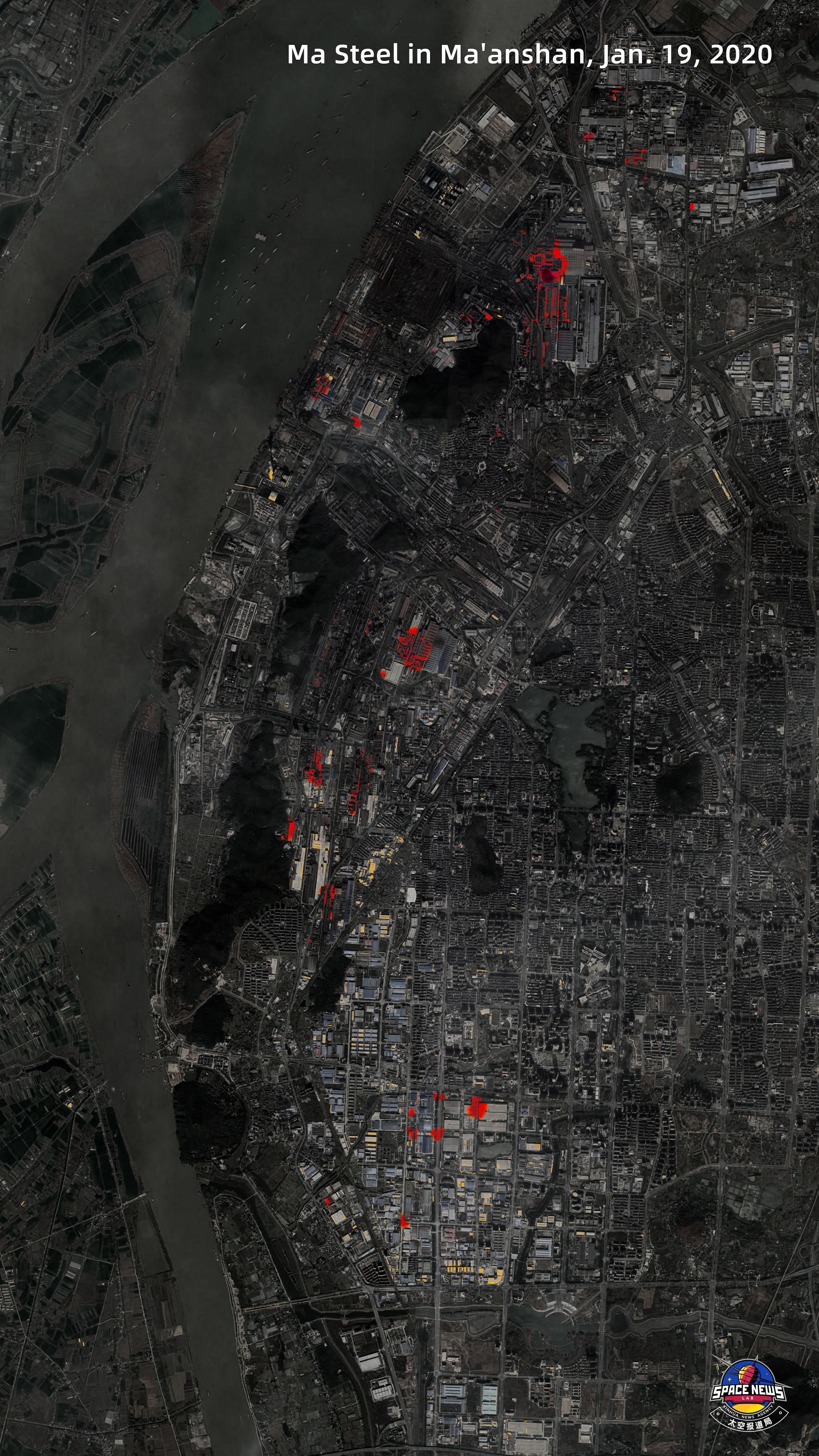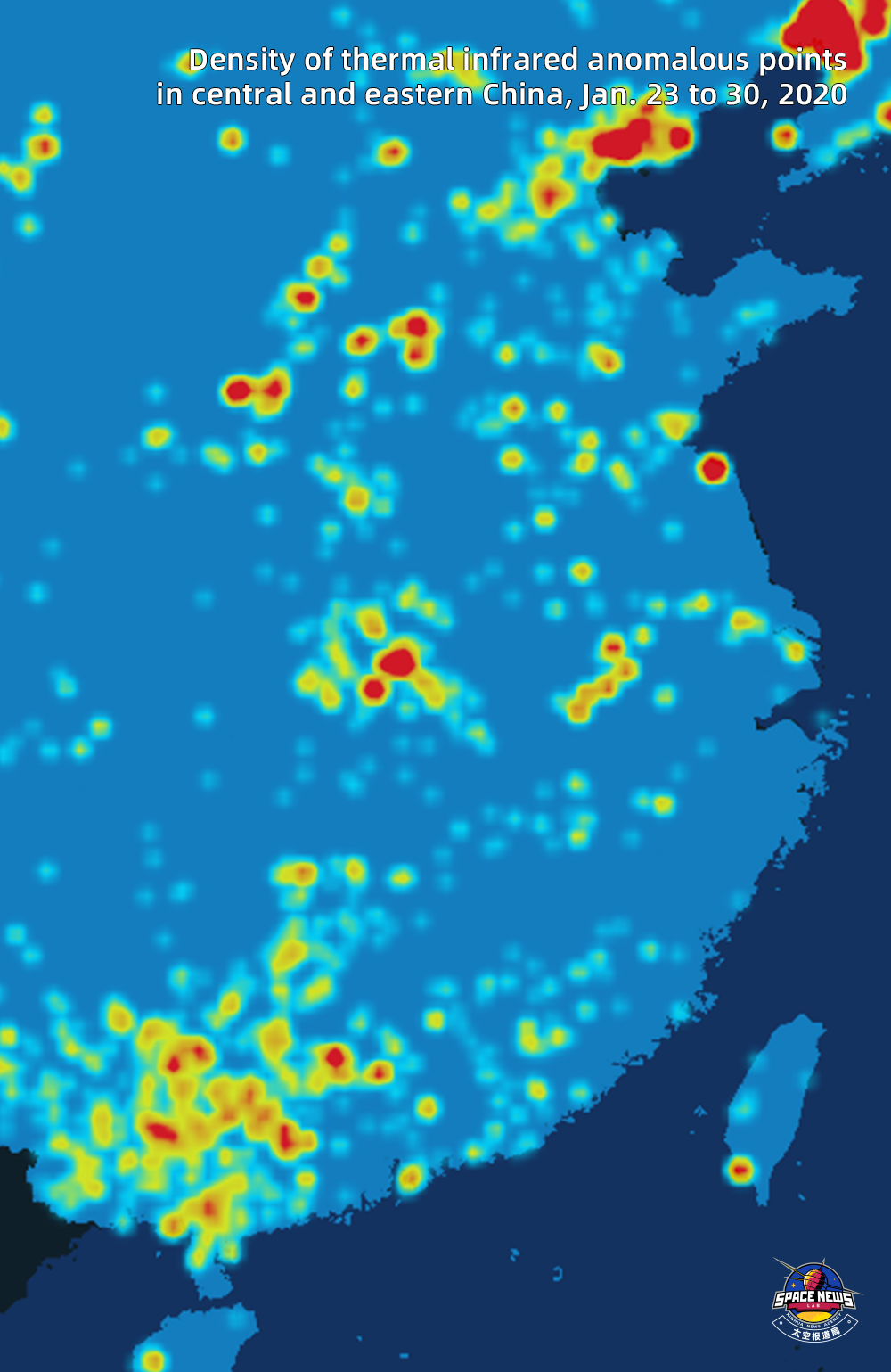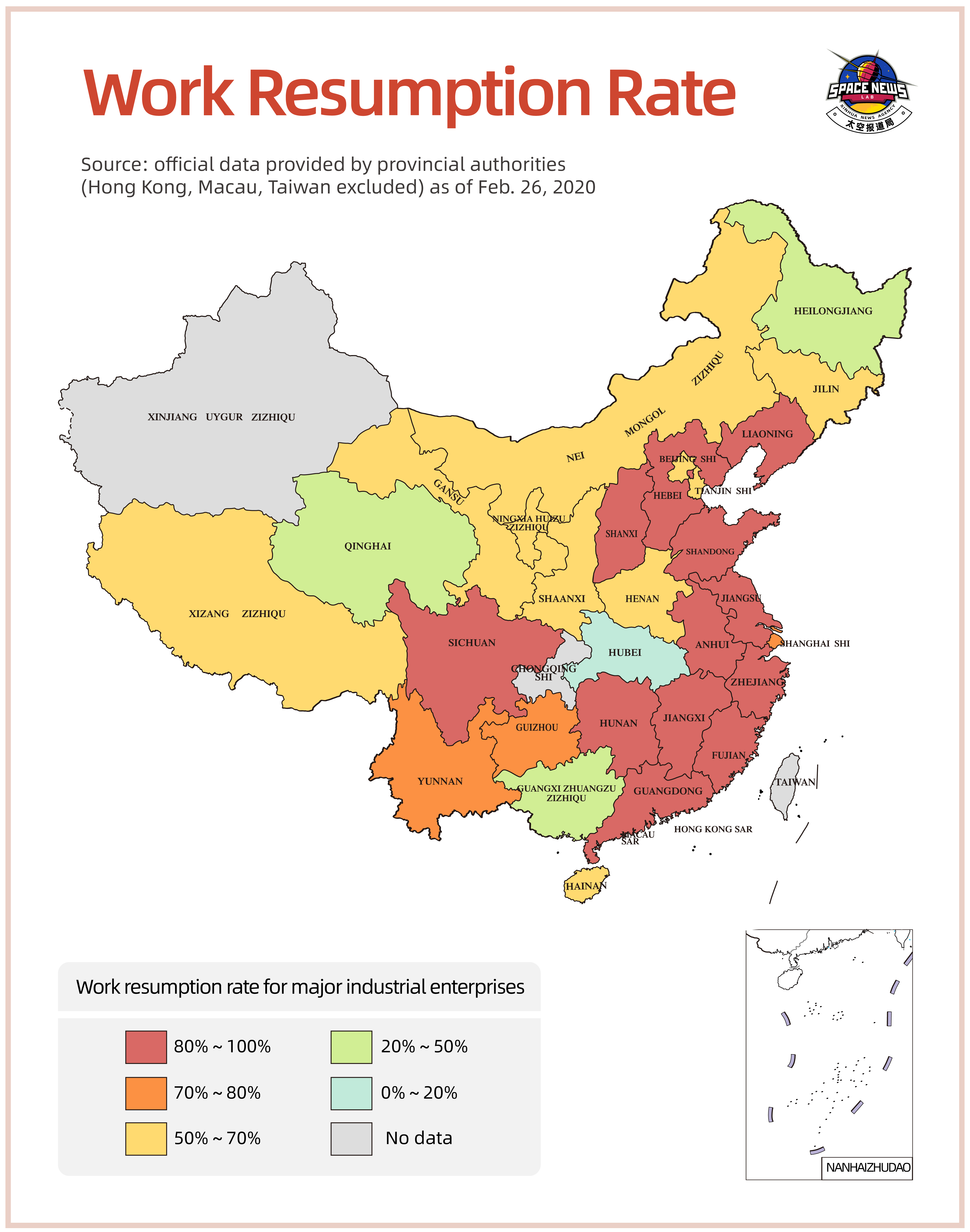A reassuring message has been sent from the space: the Chinese economy, which has been disrupted by the COVID-19 epidemic, is regaining steam.
BEIJING, March 1 (Xinhua) -- After more than a month's tough battle against the coronavirus, industrial production has gradually restarted and everyday life is slowly returning to normal across the country.
This trend has been made evident by the rapid increase in the "calorific value" observation data from remote sensing satellites.
The area marked with red dots, as shown in images below, indicates that the ground temperature of this area is above the average temperature of the whole region, which usually stem from fire, industrial or energy production, or high-density production and living activities.
More and more red dots started to show on the captured images and the "heated" areas continue to expand, just like a temporarily resting runner, gradually stretching his bones and muscles and gaining strength.
Let's first go to Shanghai.
SHANGHAI
The following two images of Jinshan District, located in the southwest of Shanghai and to the north of Hangzhou Bay, were captured by satellites on Jan. 21 and Feb. 22 respectively.
 Satellite image of Jinshan District, Shanghai, on Jan. 21, 2020.
Satellite image of Jinshan District, Shanghai, on Jan. 21, 2020.

Satellite image of Jinshan District, Shanghai, on Feb. 22, 2020.
On Jan. 21, when enterprises and plants stopping operation, workers returning to their hometown for the Spring Festival holiday, the ground temperature in the whole area was relatively evenly distributed.
On Feb. 22, more red dots started to show on the image because of the heat from the resumption of production and increase in population density.
The Shanghai Chemical Industry Park (SCIP) based in Jinshan District is a state-level economic and technological development zone, and also one of the largest petrochemical bases in Asia. As of now, nearly all of the enterprisers in the zone have resumed production.
Moreover, by Feb. 24, 347 of 414 production-oriented enterprises in Jinshan Industry Park had returned to work.
Similar trend can also be observed in the new Lingang area of the China (Shanghai) Pilot Free Trade Zone (FTZ).

Satellite image of the new Lingang area, China (Shanghai) Pilot Free Trade Zone (FTZ), on Jan. 21, 2020.

Satellite image of the Tesla Shanghai Gigafactory, Lingang Industrial Park and the Lingang Production Base of SAIC Motor in Shanghai,on Feb. 22, 2020.
As of Feb. 24, a total of 971 enterprises located in the new Lingang area had resumed production, with over 40 thousands of employees returning to work, among which the Tesla Shanghai Gigafactory resumed operation on Feb. 10, driving surrounding enterprises to resume production.
NINGBO, ZHEJIANG PROVINCE
The Ningbo Petrochemical Economic and Technical Development Zone (NPETDZ), which is located on the southern bank of Hangzhou Bay, is one of the leading petrochemical zones in China.
In 2018 the output value of its major enterprises totaled 190 billion yuan (about 27 billion U.S. dollars). As of Feb. 13, 90 percent of the zone's production capacity had recovered, with over 13,000 employees at work.
Currently, the petroleum and petrochemical sector, which is an important upstream industry of the national economy, has seen 95 percent of all enterprises having resumed production.

Satellite image of the Ningbo Petrochemical Economic and Technical Development Zone in Ningbo, Zhejiang Province, on Jan. 21, 2020.

Satellite image of the Ningbo Petrochemical Economic and Technical Development Zone in Ningbo, Zhejiang Province, on Feb. 22, 2020.
MA'ANSHAN, ANHUI PROVINCE
Ma Steel, the state-owned iron and steel giant, is located in the city of Ma'anshan, east China's Anhui Province. As the largest industrial enterprise in Anhui, Ma Steel has kept on its operation despite the Spring Festival holiday. As of Feb. 25, 92 percent of major industrial enterprises in Anhui Province had resumed production, with more than 1.5 million employees returning to work.

Satellite image of the iron and steel giant Ma Steel in the city of Ma'anshan, east China's Anhui Province, Jan. 19, 2020.

Satellite image of the iron and steel giant Ma Steel in the city of Ma'anshan, east China's Anhui Province, Feb. 20, 2020.
YANGTZE RIVER DELTA
The red areas shown on the images captured by remote-sensing satellites represent the thermal infrared anomaly. The deeper the red color, the larger the number of thermal infrared anomalous points.
In the Yangtze River Delta which is densely populated, this kind of thermal infrared anomaly usually indicate the existence of "industrial heat sources."

Satellite image shows the density of thermal infrared anomalous points in Yangtze River Delta during the period from Jan. 23 to 30, 2020.

Satellite image shows the density of thermal infrared anomalous points in Yangtze River Delta during the period from Feb. 19 to 26, 2020.
Compared to the period from Jan. 23 to 30 within the Spring Festival holiday, the week staring on Feb. 19 saw the density of thermal infrared anomaly in Yangtze River Delta increased dozens of times.
CENTRAL AND EASTERN CHINA
The data obtained from remote-sensing satellites has demonstrated that central and eastern China is also "heating up" rapidly.

Satellite image shows the density of thermal infrared anomalous points in central and eastern China during the period from Jan. 23 to 30, 2020.

Satellite image shows the density of thermal infrared anomalous points in central and eastern China during the period from Feb. 19 to 26, 2020.
ACROSS THE COUNTRY


The graphics show the province-level and city-level "work resumption rate" of the Chinese mainland, which reflects the percentage of major industrial enterprises that have returned to work.
Thanks to the adoption of region-specific and differentiated approach, many regions of the country are advancing toward full resumption of work and production. As data shows, industrial production in central and eastern China have basically restored since Feb. 10.
The epidemic outbreak came as an unexpected "test" for the world's second largest economy.
As winter is drawing to a close, spring is just around the corner. China's economy is "heating up" and back on track, and China will eventually win the battle against the epidemic. ■



